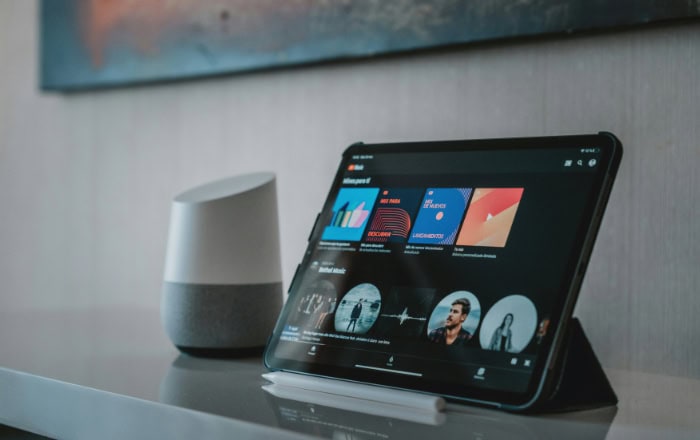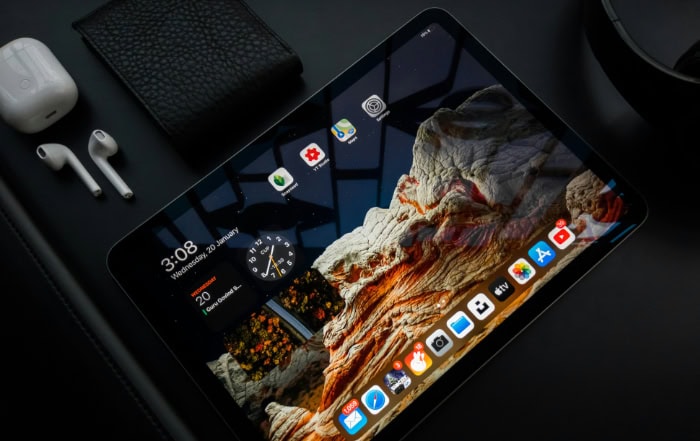Pros and Cons of iPad: Factors to Consider Before Buying

Apple’s iPad has become a household name, synonymous with sleek design, powerful performance, and an unparalleled user experience. Since its introduction in 2010, the iPad has captured the hearts and minds of tech enthusiasts and casual users alike.
Its popularity is undeniable, but is it the right device for everyone? As with any technology product, the iPad comes with its own set of strengths and weaknesses that must be carefully considered before making a purchase.
iPad Hardware: A Double-Edged Sword
When it comes to the iPad’s hardware, Apple’s tablet boasts an impressive array of features that set it apart from the competition. While these strengths are undeniable, it’s essential to consider some notable limitations that potential buyers should be aware of.
Retina Display and Powerful Processors
One of the iPad’s most striking features is its high-quality Retina display. With vibrant colors and sharp resolution, the iPad’s screen brings content to life, making it a joy to watch videos, browse photos, and read text.
Coupled with Apple’s powerful A-series processors, the iPad delivers smooth, responsive performance that rarely leaves users waiting.
Impressive Battery Life
Another hardware highlight of the iPad is its long battery life. With many models offering all-day use on a single charge, the iPad is an ideal companion for work, study, or entertainment on the go.
Whether you’re streaming videos, working on documents, or browsing the web, you can rely on the iPad to keep up with your needs without constantly searching for a power outlet.
Storage and Connectivity Limitations
While iPads excel in many areas, there are some hardware limitations to consider. One potential drawback is the limited storage options compared to laptops. iPads typically come with fixed storage capacities, ranging from 32GB to 1TB, depending on the model. Unlike many laptops, iPads do not have expandable storage via SD card slots or USB drives, which means you’ll need to choose a model with sufficient storage for your needs from the outset.
Another consideration is the proprietary charging port used by iPads. Older models feature Apple’s Lightning connector, while newer iPads have transitioned to USB-C. While these ports are reliable and efficient, they may require you to purchase additional cables or adapters if you want to connect your iPad to other devices or accessories that use different connectors.
iPad Software: A Robust Ecosystem with Room for Improvement
The iPad’s software and app ecosystem are among its most significant selling points, offering users a wide range of high-quality, tablet-optimized apps and an intuitive, user-friendly interface. Despite these advantages, there are some areas where the iPad’s software falls short compared to desktop operating systems and competing tablet platforms.
A Wealth of iPad-Optimized Apps
One of the iPad’s greatest strengths is its extensive library of apps designed specifically for the tablet’s larger screen and touch-based interface. From productivity tools and creative apps to games and entertainment, there’s no shortage of high-quality software to choose from.
Many of these apps take full advantage of the iPad’s hardware capabilities, delivering immersive, engaging experiences that set the tablet apart from smartphones and laptops.
Intuitive Interface and Regular Updates
Another advantage of the iPad’s software is its intuitive, touch-friendly interface. With easy-to-learn gestures and a well-organized home screen, the iPad is accessible to users of all skill levels.
Apple’s commitment to regular software updates also ensures that the iPad remains secure and up-to-date with the latest features and improvements.
Limitations Compared to Desktop Software
Despite the iPad’s impressive app ecosystem, there are some limitations when compared to desktop-class software. Some advanced productivity tools, such as full-featured video editing or 3D modeling software, may not be available on the iPad or may offer reduced functionality.
This can be a drawback for users who require these specialized tools for their work or hobbies.
Customization and Cross-Platform Challenges
Compared to Android tablets, the iPad offers limited customization options, which may disappoint users who prefer a more personalized experience. Additionally, some apps require separate purchases from their iPhone counterparts, which can be frustrating for users who expect a seamless, cross-platform experience.
iPad Usability: Balancing Portability and Productivity

The iPad’s usability and versatility are among its most appealing qualities, making it an excellent choice for a wide range of tasks and users. That being said, there are some areas where the iPad’s interface and form factor may present challenges, particularly for users accustomed to traditional laptops or desktop computers.
Portability and Media Consumption
One of the iPad’s greatest strengths is its portability. With a lightweight, slim design, the iPad is easy to carry around, making it perfect for on-the-go use.
Whether you’re commuting, traveling, or simply moving from room to room, the iPad is a convenient companion. This portability, combined with the iPad’s high-quality display and impressive battery life, makes it an excellent device for media consumption, reading, and web browsing.
Apple Pencil Support
Another notable feature of the iPad is its support for the Apple Pencil. This precision stylus allows users to draw, sketch, and take handwritten notes with exceptional accuracy and responsiveness.
For artists, designers, and students, the Apple Pencil can be a game-changer, transforming the iPad into a powerful creative tool.
Multitasking Limitations
While the iPad’s touch-based interface is intuitive and easy to use, it can present some limitations when it comes to multitasking. Compared to laptops with larger screens and more flexible windowing systems, the iPad’s multitasking capabilities may feel more constrained.
This can be a drawback for users who frequently need to work with multiple apps or documents simultaneously.
Typing and Complex Tasks
Another potential challenge of the iPad’s usability is typing on its virtual keyboard. While the iPad’s on-screen keyboard is responsive and well-designed, it may not be as comfortable for long typing sessions as a physical keyboard.
Users who need to type extensively may want to consider purchasing a separate Bluetooth keyboard or a keyboard case for their iPad.
Similarly, some complex tasks, such as coding or advanced video editing, may be less suited to the iPad’s touch-based interface. While there are apps available for these purposes, users accustomed to desktop software may find the iPad’s approach less efficient or less feature-rich.
iPad Cost: Balancing Value and Investment
When considering the purchase of an iPad, cost is often a primary concern for many users. While the iPad is known for its premium features and build quality, it’s essential to weigh the device’s value against its price point and potential additional expenses.
A Range of Models and Prices
One of the advantages of the iPad lineup is the variety of models available at different price points. From the budget-friendly iPad mini to the high-end iPad Pro, there’s an iPad to suit a wide range of budgets and needs.
This allows users to choose the model that best aligns with their priorities, whether that’s portability, performance, or affordability.
Long-Term Value
Another factor that contributes to the iPad’s value is its long lifespan. Apple is known for providing software updates to its devices for several years after their release, ensuring that even older iPads can benefit from new features and security improvements.
This extended support helps to justify the iPad’s higher upfront cost, as users can enjoy their devices for longer without feeling the need to upgrade frequently.
Additionally, iPads tend to hold their resale value well compared to Android tablets, which can be a significant advantage for users who plan to sell their devices in the future to offset the cost of upgrading.
Higher Starting Price and Accessory Costs
Despite the iPad’s long-term value, it’s important to acknowledge that the device’s starting price is higher than many Android tablets. This can be a barrier for budget-conscious buyers who may find more affordable alternatives that meet their needs.
Furthermore, the cost of accessories like the Apple Pencil and keyboard cases can add significantly to the overall expense of owning an iPad. These accessories can greatly enhance the iPad’s functionality, but their additional cost should be factored into the decision-making process.
High-End Models vs. Laptops
At the upper end of the iPad lineup, the cost of high-end models like the iPad Pro can approach or even exceed the price of some laptops. While these premium iPads offer exceptional performance and features, buyers should carefully consider whether an iPad or a laptop better suits their needs at this price point, as laptops may offer more flexibility and compatibility with a wider range of software.
iPad vs. Alternatives: Choosing the Right Device

When deciding whether an iPad is the right choice, it’s essential to consider how it compares to alternative devices like laptops, Android tablets, and smartphones. Each device category has its own strengths and weaknesses, and the best choice will depend on your specific needs and preferences.
iPad vs. Laptops
Compared to laptops, iPads offer several advantages in terms of portability and battery life. iPads are generally lighter and more compact than laptops, making them easier to carry around and use on the go.
They also tend to have longer battery life, which can be a significant benefit for users who need to work or entertain themselves away from power outlets for extended periods.
However, laptops typically offer more powerful hardware and compatibility with a wider range of desktop software. For users who require demanding applications like video editing software, 3D modeling tools, or programming environments, a laptop may be a better choice.
Laptops also offer more flexibility in terms of input, with full-sized keyboards and support for a variety of mice and other peripherals.
iPad vs. Android Tablets
When compared to Android tablets, one of the iPad’s main strengths is its wide selection of tablet-optimized apps. The App Store offers a vast library of high-quality apps designed specifically for the iPad’s larger screen and touch-based interface, which can provide a more polished and enjoyable user experience.
On the other hand, Android tablets often provide more customization options and a wider range of hardware configurations. Users who value the ability to personalize their device’s look and feel or who need specific hardware features like expandable storage or a particular type of port may prefer an Android tablet.
iPad vs. Smartphones
Compared to smartphones, iPads offer larger screens that provide a more immersive experience for media consumption and multitasking. The iPad’s larger display makes it better suited for tasks like watching videos, reading e-books, or working with multiple apps side by side.
However, smartphones have the advantage of being more pocketable and always connected to cellular data networks. For users who prioritize portability and constant connectivity, a smartphone may be a more practical choice.
Smartphones are also generally more affordable than iPads, which can be a consideration for budget-conscious buyers.
Conclusion
The iPad is a remarkable device that offers an impressive array of features and benefits, making it a compelling choice for many users. With its powerful hardware, stunning Retina display, and long battery life, the iPad provides a high-quality, portable computing experience.
The device’s extensive library of tablet-optimized apps and intuitive, touch-friendly interface further enhance its versatility and usability.
However, it’s crucial to consider the iPad’s limitations, such as its limited storage options, potential multitasking constraints, and higher starting price compared to some alternatives. Additionally, the cost of accessories like the Apple Pencil and keyboard cases can add to the overall expense of owning an iPad.
In the end, the decision to purchase an iPad should be based on a careful evaluation of your individual needs and priorities. Consider how the iPad’s strengths, such as its portability, app ecosystem, and Apple Pencil support, align with your intended use cases.
At the same time, weigh the device’s limitations against your requirements for storage, multitasking, and budget.
For many users, the iPad strikes a compelling balance between capability and portability, offering a powerful, versatile tool for work, study, and entertainment. By thoroughly assessing the iPad’s pros and cons and comparing it to alternative devices like laptops, Android tablets, and smartphones, you can make an informed decision about whether this iconic tablet is the right fit for you.


